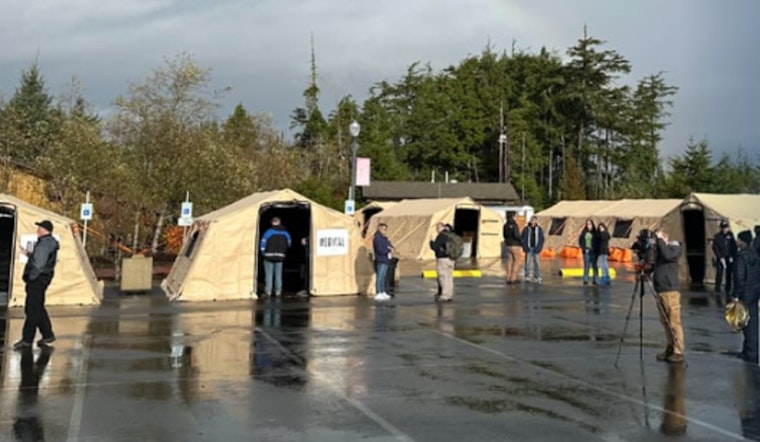The Coquille Indian Tribe partnered with the State of Oregon to demonstrate an emergency preparedness exercise as part of a proactive effort to increase preparedness for a potentially disastrous situation. According to the Oregon Department of Human Services, this highlights the establishment of an Evacuation Assembly Point (EAP), a strategic project deemed essential following an earthquake in Cascadia and the ensuing tsunami concerns. While first responders evaluate and treat the disaster-affected areas, communities can find shelter at the EAP, a makeshift gathering place.
The EAP equipment, which is being kept on tribal lands in accordance with an agreement with the Coquille Indian Tribe, was funded by the Oregon Department of Human Services Office of Resilience and Emergency Management (OREM). The cache, which is housed in durable metal containers, contains enough food, water, and medical supplies to last up to 100 people for two weeks. According to the Oregon Newsroom, Chair Brenda Meade said, “The Coquille Indian Tribe is excited to be able to take on this responsibility which highlights what is possible when two sovereign entities work together for the common good.”
In addition to other planned sites at Tillamook Municipal Airport and Newport Airport, this project is the third installation of EAP technology along the Oregon Coast. These locations are prearranged evacuation routes that facilitate the quick removal of people from hazardous areas. Because of the increased risk of isolation following a disaster, coastal communities in Oregon are at the forefront of these preparation efforts. OREM Director Ed Flick told the Oregon Newsroom, “Data shows coastal communities are most likely to be cut off from the rest of the state in the aftermath of a Cascadia earthquake, so they are a priority for housing EAP equipment.”
The EAP’s setup was only the beginning of the preparedness exercise. A number of demonstrations were held to highlight the various emergency services’ capabilities. The US Coast Guard demonstrated their expertise in search and rescue and medical extraction. Through mass care triage, CERFP showed its proficiency in handling chemical, biological, radiological, nuclear, and explosive crises. Additionally, by demonstrating the use of an unmanned aircraft system, or drone, the Scappoose Fire Department demonstrated their proficiency in utilizing technology.
Note: Every piece of content is rigorously reviewed by our team of experienced writers and editors to ensure its accuracy. Our writers use credible sources and adhere to strict fact-checking protocols to verify all claims and data before publication. If an error is identified, we promptly correct it and strive for transparency in all updates, feel free to reach out to us via email. We appreciate your trust and support!



Leave a Reply